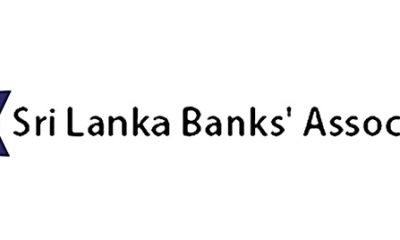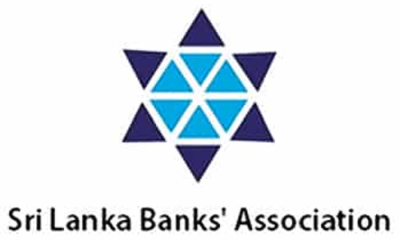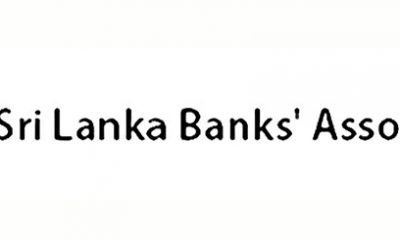News
Parate execution is the last resort to protect depositors’ funds – SLBA

Banks exercise their legally-enshrined right to Parate Execution as a last resort and the overarching objective is the protection of depositors’ funds that have been lent to borrowers, the Sri Lanka Banks Association (SLBA) has said in a statement to the media.
Responding to what it termed as lobbying by a group of defaulting borrowers espousing the removal or weakening of the protection of depositors’ funds, the Association said the Parate Execution remedy is aimed at recovering mortgaged assets from wilful defaulters and businesses that are no longer viable.
The SLBA, which represents all the licensed banks in the country, emphasized that banks have extended moratoriums on debt repayment for a long period exceeding 48 months in some cases, and that in instances of wilful default by borrowers, the banks owe a duty to their depositors’ whose funds are at risk, to recover the debts overdue and minimize the losses on loans granted.
The Association pointed out that the funds used to grant loans are placed with the banks by their depositors and that depositors are paid interest out of the interest charged from loans granted to borrowers. “Banks are responsible to manage this intermediary role in a very careful manner to avoid deterioration of depositor confidence which can lead to many negative economic consequences,” the SLBA statement said.
“When borrowers face difficulties in repayment, the lending banks review the causes for the inability to repay interest and/or capital, and assess how the situation needs to be remedied to restore the borrower to being able to repay loans and carry on business/economic activity,” the SLBA said. “In such instances it is common for the banks to exercise empathy as a “partner” and assist the borrowers to come out of their challenging financial situation, and it is common for the banks to consider extension of loans, provide moratoriums, consider interest concessions and restructure the loans to suit the future cash flows of the employment or the business.
Banks take this course as the preferred alternative to liquidating the assets of the borrower under loan security arrangements. This is because it is beneficial for the customer as well as the bank to revive a business to good financial health than to shut it down and take whatever residual value is left, which in majority of cases is less than the value of the amounts due to the bank and kills the economic activity that was being financed. The banks therefore take the option of a win-win for all and support the borrowers when they face difficulties.”
“When assessing the condition of the overdue loans and their ability to be revived, banks have to accept that certain cases are beyond revival and/or that the default is wilful and in fraud of the lender. In these limited circumstances banks as responsible financial intermediaries must necessarily invoke the remedies available under the law and this includes ‘Parate Execution’ which is a measure to protect the depositors’ funds from wilful defaulters.”
The Association explained that: “As a natural consequence of investing in a business, a businessman may encounter strains principally on his ability to repay loans that cannot be sustained by bank depositor’s funds i.e. bank financing alone. A decline in the economy as in Sri Lanka due to social and political disturbances, pandemic conditions and an overwhelming public debt burden can also cause businesses to fail.
There has been governmental and external institutional aid to tide over these difficult times but the main reliance has been on the banks that have extended moratoriums on debt repayment for a long period, exceeding 48 months in some cases. The banks provide concessions and interest waivers during these difficult times to borrowers while maintaining interest payments to depositors to maintain confidence.”
“All should acknowledge the fact that the banks, guided by the Central Bank of Sri Lanka, extended their fullest support to weather a very challenging period from the Easter Sunday attacks to the pandemic, and the economic crisis that followed.”
“Parate Execution against assets securing bank debt (depositors’ funds) is the last resort. This is when all efforts at resolution of borrower’s insolvency are met with refusal to review/negotiate, usually by malicious abuse of judicial proceedings which is a common dilatory tactic.”
“It now appears that a group of defaulting borrowers in various sectors have engaged lobbyists of varying degrees of influence to espouse the removal/weakening of the protection of depositors’ funds from wilful value destruction by owners of non-viable businesses where repayment delays are deliberate.”
“Therefore, the banks wish to state the position in relation to reliefs claimed by the borrowers and the cost to the depositors who provide the funds, if recovery actions are taken away:
* Banks are always open to have one-on-one discussions with any borrower who has faced difficulties in meeting debt obligations to have alternative options for loan repayments. This is in the best interest of all stakeholders.
* If there is no source of repayment, postponing recovery action will not solve the issue and ultimately the depositors’ funds will not be returned to the banks.
* The Parate Execution remedy is aimed at recovering mortgaged assets from wilful defaulters/businesses that are no longer viable.
* The overarching objective is to protect depositors’ funds that have been lent to wilful defaulters/ borrowers.
* Depositors’ confidence is of paramount importance for economic growth which is much needed in the Sri Lankan context.
* If Parate Rights are taken away, banks will be compelled to be extremely selective in lending and the availability of finance will be to a narrowing segment of entrepreneurs, resulting in credit to the private sector shrinking, contrary to Government and regulatory policies.
News
NPP wins most LG bodies but sees drop in vote share: Hung councils raise concern

SJB trying to take control of CMC
Govt. suffers set back in N&E
SLPP records significant increase in votes but fails to win single body
The ruling National People’s Power (NPP) secured 266 out of 339 local government bodies at the May 6 election but suffered a setback in the northern and eastern regions as the Illankai Thamil Arasu Kadchi (ITAK) and the Sri Lanka Muslim Congress (SLMC) won 42 local authorities.
The ITAK and SLMC secured 37 and 05 local government bodies, respectively, although President Anura Kumara Dissanayake personally led the NPP’s campaign in the former war zone. The National Congress won the Akkaraipattu MC. In the last parliamentary election held in Nov. 2014, the NPP won all electoral districts, except Batticaloa.
The NPP obtained 4,503,930 votes countrywide whereas in the last parliamentary election it received 6,863,186 votes; there has been a drop of 2,359,256 votes.
The Samagi Jana Balawegaya (SJB) won 13 local government bodies, but the United National Party (UNP) and the Sri Lanka Podujana Peramuna (SLPP) failed to secure any.
The SLPP obtained 954,517 votes and 742 seats, accounting for 9.17% of the national vote. In a post on X, SLPP’s National Organiser Namal Rajapaksa said: “Over the past six months, the SLPP has regrouped and gained momentum by staying true to our principles. While some rely on false promises, we remain committed to honest, principled politics that put the people first. Thank you to everyone who stood by us. This is just the beginning. We will keep working, village by village, to rebuild and restore trust in real leadership.” The SLPP polled only 350,429 votes in last year’s general election.
In the 2018 LG polls, the SLPP won 231 councils. That was the first time the government of the day failed to win mini polls. Yahapalana partners, UNP and SLFP, having contested separately, suffered a debilitating setback.
In spite of the massive campaign carried out by the NPP, targeting the Colombo Municipal Council (CMC), the ruling party failed to secure an overall majority there. The NPP polled 81,000 votes to obtain 48 seats whereas the SJB and UNP polled 58,375 (29 seats) and 26,297 (13 seats) votes, respectively. The SLPP (05), SLMC (04), United Republican Front (01), United Peace Alliance (02), Sarvajana Balaya (02), and National People’s Party, National Freedom Front, People’s
Alliance and Democratic National Alliance one each.
In addition to political parties, five Independent Groups shared the remaining 09 seats of the CMC.
With no party holding a clear majority, the next Colombo Mayor will need to be elected through a Council vote.
SJB General Secretary Ranjith Madduma Bandara told a hastily arranged media conference that the SJB intended to elect an SJBer as Colombo Mayor with the help of the other Opposition parties. The former Minister said that the SJB would cooperate with the other parties in the Opposition regarding the appointment of Mayors and Chairmen of the hung local councils.
Meanwhile, the Leader of the House, Bimal Ratnayake, has said those who won local government bodies in the Northern Province but without absolute majorities have sought NPP support to form administrations.
Addressing a separate media briefing, JVP General Secretary, Tilvin Silva, declared that the ruling party wouldn’t, under any circumstances, form coalitions with those who had been rejected by the people.
News
Local councils won by political parties and Ind. groups

Colombo District
NPP:
Colombo MC, Dehiwala-Mount Lavinia MC, Sri Jayewardenepura MC, Moratuwa MC, Kaduwela MC, Kolonnawa UC, Seethawakapura UC, Maharagama UC, Kesbewa UC, Boralesgamuwa UC, Kotikawatte PS, Seethawaka PS and Homagama PS.
Gampaha District
NPP:
Negombo MC. Gampaha MC, Wattala-Mabola UC (both NPP and SJB obtained six seats each), Katunayaka-Seeduwa UC, Minuwangoda UC, Ja-ela UC, Peliyagoda UC, Wattala PS, Katana PS, Divulapitiya PS, Mirigama PS, Minuwangoda PS, Attanagalle PS, Gampaha PS, Mahara PS, Dompe PS, Biyagama PS and Kelaniya PS.
Kalutara District
NPP:
Panadura UC, Horana UC, Kalutara MC, Panadura PS, Bandaragama PS, Horana PS, Madurawala PS, Bulathsinhala PS, Matugama PS, Dodangoda PS, Kalutara PS, Beruwala PS, Agalawatta PS (both NPP and SJB obtained six seats each), Millaniya PS and Walallawita PS
Kandy District
NPP:
Kandy MC, Wattegama UC, Kadugannawa UC, Nawalapitiya UC, Thumpane PS, Harispattuwa PS, Poojapitiya PS, Pathadumbara PS, Udadumbara PS (both NPP and SJB obtained six seats each), Minipe PS, Medadumbara PS, Kundasale PS, Pathahewaheta PS, Kandy Four Gravets and Gangawatta Korale PS, Yatinuwara PS, Udunuwara PS, Udapalatha PS, Ganga Ihala Korale PS and Pasbage Korale PS.
Matale District
NPP:
Dambulla MC, Matale MC, Pallepola PS, Galewela PS, Dambulla PS, Naula PS, Laggala-Pallegama PS (both NPP and SJB obtained six seats each), Wilgamuwa PS, Matale PS, Yatawatta PS, Ukuwela PS, Rattota PS.
Nuwara Eliya District
NPP
Nuwara Eliya MC, Hatton-Dikoya UC, Thalawakale-Lindula UC, Maskeliya PS, Norwood PS (NPP and Ceylon Workers’ Congress ‘P’ wing won six seats each), Ambagamuwa PS, Agarapathana PS (NPP and Ceylon Workers’ Congress ‘P’ wing won four seats each), Kotagala PS ((NPP and Ceylon Workers’ Congress ‘P’ wing won five seats each), Nuwara Eliya PS, Kothmale PS, Hanguranketha PS and Walapone PS.
Galle District
NPP:
Galle MC, Ambalangoda UC, Hikkaduwa UC, Balapitiya PS, Ambalangoda PS, Welivitiya Divithura PS, Karandeniya PS, Bentota PS, Neluwa PS, Thawalama PS, Nagoda PS, Niyagama PS, Baddegama PS, Yakkalamulla PS, Rajagama PS, Akmeemana PS, Bope Poddala PS, Imaduwa PS and Habaraduwa PS.
Matara District
NPP:
Matara MC, Weligama UC, Pitabeddara PS, Kotapola PS, Kirinda Puhulwella PS, Mulatiyana PS, Pasgoda PS, Athureliya PS, Akuressa PS, Malimbada PS, Hakmana PS, Kamburupitiya PS, Thihagoda PS, Devinuwara PS, Dikwella PS, Matara PS and Weligama PS.
Hambantota District
NPP:
Hambantota MC, Tangalle UC, Weeraketiya PS, Katuwana PS, Beliatta PS, Tangalle PS, Angunakolapelessa PS, Ambalantota PS, Tissamaharama PS, Sooriyawewa PS, Hambantota PS and Lunugamwehera PS.
Jaffna District
ITAK:
Jaffna MC, Chavakachcheri UC (ITAK and ACTC won six seats each), Delft PS, Velanai PS, Walikamam west PS, Walikamam north PS, Walikamam south-west PS, Walikamam south PS, Walikamam east PS, Vadamaratchchy South West PS, PPD PS, Chavakachcheri PS and Nallur PS.
ACTC
VVT UC, PPD UC, Karainagar PS ( ACTC, UNP, NPP , TMK and Ind group ii won two seats each), Kayts PS (EPDP),
Kilinochchi District
ITAK:
Pachchilaippalli PS, Karachchi PS and Poonakary PS
Mannar District
ITAK:
Mannar UC, Mannar PS, Manthai West
NPP:
Nanattan PS
SJB:
Musali PS
Vavuniya District
Vavuniya MC (DTNA, NPP and Sri Lanka Labour Party won four seats each)
NPP:
Vavuniya north PS, Vavuniya south (Tamil) PS and Vavuniya South (Sinhala) PS
SJB:
Vengalasettikulam PS
Mullaitivu District
ITAK:
Manthai East PS, Thunukai PS
ITAK:
Puthukudirippu PS and Maritimepattu PS
SJB:
Kalutara District
Palindanuwara PS
Kandy district
SJB:
Gampola UC
Akurana PS
Panwila PS
Matale
Ambanganga Korale PS
Kalutara District
Ind. Group 1 Beruwela UC
Batticaloa district
ITAK:
Batticaloa MC, Eravurpattu PS, Koralaipattu PS, Manmunai South and Eluvil Pattu, Manmunai Pattu PS, Manmunai West and Porathivu Pattu PS.
SLMC:
Eravur UC, Kathankudi UC,
TMVP:
Koralai Pattu North, Manmunai South West PS (ITAK and TMVP won six seats each)
Ampara district
National Congress:
Akkaraipattu MC, Akkaraipattu PS
NPP:
Ampara UC, Dehiattakandiya PS, Damana PS, Uhana PS, Mahaoya PS, Namaloya PS, Padiyatalawa PS, Lahugala PS,
ITAK:
Navithanveli PS, Alayadiwembu (ITAK and NPP won seven seats each), Karaitheevu PS
ACMC:
Sammanthurai PS, Ninthavur PS
SLMC:
Irakkamam PS, Addalachenai PS,
Independent Group 4
Pottuvil PS
Independent Group 1
Thirukkovil PS
Trincomalee District
ITAK:
Trincomalee MC, Verugal PS, Trincomalee town and Gravets PS, Muttur PS,
ACMC:
Kinniya UC (SJB and ACMC won four seats each) and Kinniya PS
NPP:
Seruwila PS, Kantale PS, Morawewa PS, Gomarankadawela PS, Padavisripura PS, Thambalagamuwa PS (NPP and SJB won three seats each)
SLMC:
Kuchchuveli PS,
Kurunegala District
NPP:
Kurunegala MC, Kuliyapitiya UC, Giribawa PS, Galgamuwa PS, Polpithigama PS, Nikaweratiya PS, Kobeigane PS, Mahawewa PS, Ibbagamuwa PS, Wariyapola PS,Panduwasnuwara PS, Bingiriya PS, Udubaddawa PS, Pannala PS, Kuliyapitiya PS, Alawwa PS, Narammala PS, Polgahawela PS, Kurunegala PS, Mawathagama PS and Rideegama PS.
Puttalam District
NPP:
Puttalam MC, Chilaw UC, Kalpitiya PS (NPP and SJB won 10 seats each), Puttalam PS, Wanathawilluwa PS, Karuwalagaswewa PS,Nawagaththegama PS, Anamaduwa PS, Arachchikattuwa PS, Chilaw PS, Nattandiya PS and Wennappuwa PS.
Anuradhapura District
NPP:
Anuradhapura MC, Medawachchiya PS, Rambawewa PS, Kebitigollewa PS, Padaviya, Kahatagasdigiliya PS, Horowpothana PS, Galenbindunuwewa PS, Thalawa PS, Nuwaragampalatha Central PS, Nuwaragampalatha east PS, Nochchiyagama PS, Rajanganaya PS, Galnewa PS, Ipologama PA, Mihintale PS, Thirappane PS, Kekirawa PS and Palagala PS.
Polonnaruwa District
NPP:
Polonnaruwa MC. Elahera PS, Hingurakgoda PS, Medirigiriya PS, Lankapura PS, Welikanda PS, Dimbulagala PS and Polonnaruwa PS.
Badulla District
NPP:
Badulla MC, Bandarawela MC, Mahiyanganaya PS, Ridimaliyadde PS, Soranthota PS,Meegahakivula PS, Kankaketiya PS, Passara PS, Lunugala PS, Badulla PS, Hali ela PS, Uva Paranagama PS, Welimada PS, Bandarawela PS, Ellpa PS,Haputale PS and Haldamulla PS.
Independent Group:
Haputale UC
Moneragala District
NPP:
Bibile PS, Medagama PS, Madulla PS, Siyambalanduwa PS, Monaragala PS, Badalkumbura PS, Buttala PS, Kataragama PS, Wellawaya PS and Thanamalwila PS
NPP also won all LG authorities in Ratnapura and Kegalle districts.
News
15 more Sri Lankan youth rescued from cybercrime camps in Myanmar

Fifteen Lankans, forcibly held in cybercrime camps in Myanmar, had been rescued on Tuesday (06), government sources said.
This operation was carried out through coordination between the Sri Lankan Ministries of Foreign Affairs, Foreign Employment, and Tourism, along with the Sri Lankan Embassy in Thailand and the Thai government.
The rescued Sri Lankan youth were handed over to the Sri Lankan Ambassador in Thailand, Wijayanthi Edirisinghe, by Thai authorities on Tuesday morning in Mae Sot, located in the Myawaddy region, along the Myanmar-Thailand border. Officials from the Thai Embassy also attended the handover.
This rescue was the result of diplomatic efforts and telephone discussions held by Sri Lanka’s Minister of Foreign Affairs, Foreign Employment and Tourism, Vijitha Herath, with Thailand’s Minister of Foreign Affairs, Maris Sangiampongsa, and Myanmar’s Minister of Foreign Affairs, U Than Swe.
The rescue operation was supported diplomatically by the Thai Embassy, the International Organisation for Migration (which provided transportation), non-governmental organisations offering welfare assistance, and officials of the Thai and Myanmar governments.
Minister Vijitha Herath expressed appreciation for their roles.
Previously, 14 Sri Lankans were rescued from cybercrime camps in Myanmar on March 18, and 27 others were brought back to Sri Lanka on Dec. 17, 2024.
By Shyam Nuwan Ganewatte
-

 News6 days ago
News6 days agoRanil’s Chief Security Officer transferred to KKS
-

 Opinion4 days ago
Opinion4 days agoRemembering Dr. Samuel Mathew: A Heart that Healed Countless Lives
-

 Business2 days ago
Business2 days agoAitken Spence Travels continues its leadership as the only Travelife-Certified DMC in Sri Lanka
-

 Business2 days ago
Business2 days agoLinearSix and InsureMO® expand partnership
-

 Business6 days ago
Business6 days agoCCPI in April 2025 signals a further easing of deflationary conditions
-

 Features6 days ago
Features6 days agoExpensive to die; worship fervour eclipses piety
-

 Features4 days ago
Features4 days agoTrump’s economic missiles are boomeranging
-

 Latest News4 days ago
Latest News4 days agoThe Heat index is likely to increase up to ‘Caution level’ at some places in Eastern, Northern, North-central and North-western provinces and in Monaragala and Hambantota districts.




















